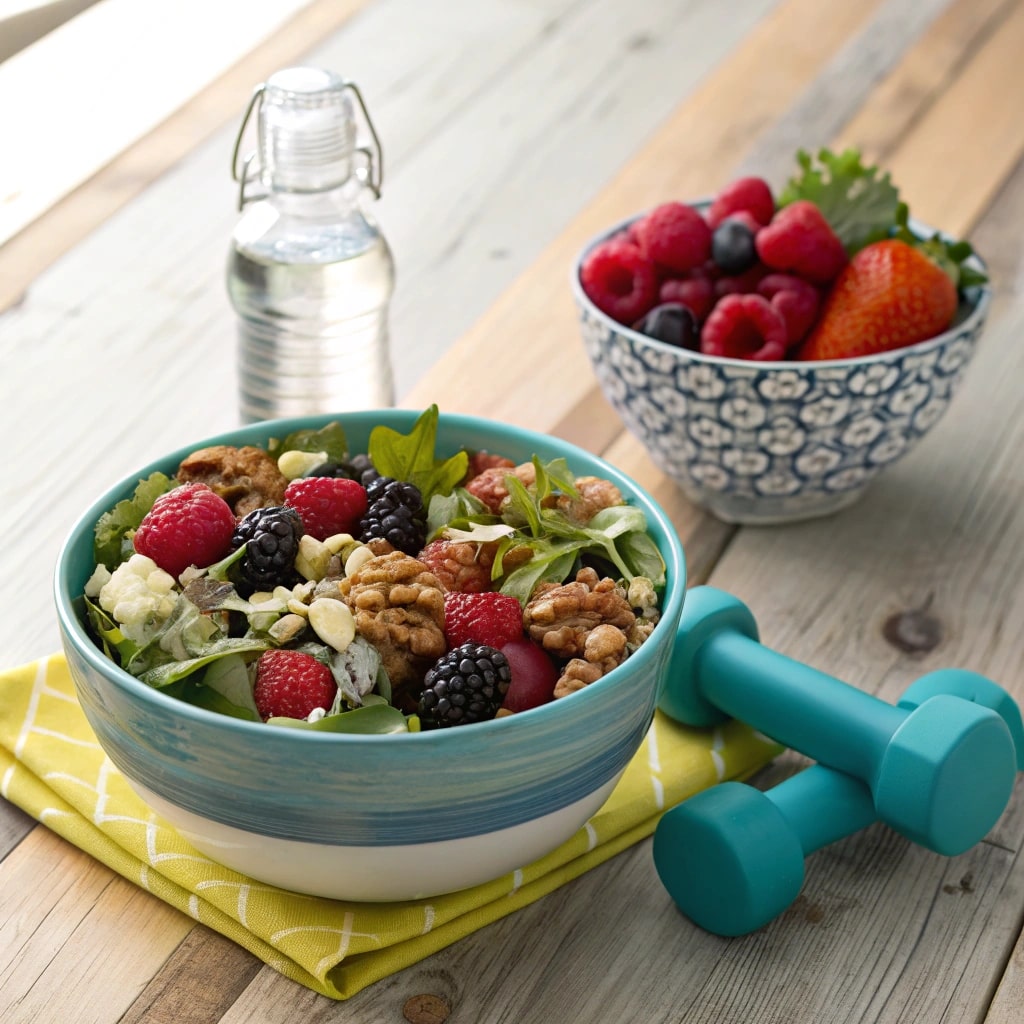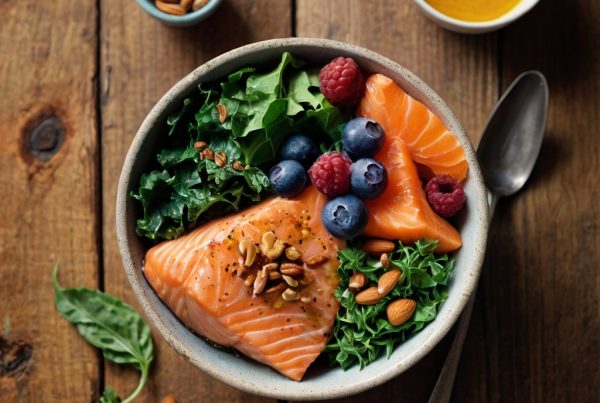Are you pushing yourself harder than ever before? Training more often, going further, striving for peak performance?
But what if your efforts are being silently sabotaged by a hidden factor? It’s not about the latest gear or advanced training techniques.
Often, it’s something we consume that’s holding us back.
Imagine recovering faster, feeling stronger after every workout, and consistently pushing past your limits.
That’s precisely what I’m going to show you today how a carefully crafted diet can be the secret weapon for unlocking your true athletic potential.
Athletic Recovery Starts Here
It’s frustrating, isn’t it? You push through a grueling workout, feeling exhausted only to feel even drained afterward. That lingering soreness and sluggishness might seem normal, but it could be your body screaming for help. Instead of bouncing back quickly, you’re stuck in a cycle of delayed recovery, hindering progress and potentially increasing the risk of injury. The key to unlocking truly rapid recovery isn’t just about stretching or ice baths, it’s about what your body does from the inside out. Every missed training session due to prolonged soreness costs you valuable time and potential gains. But here’s a truth many athletes overlook: how you eat directly impacts how quickly and effectively your muscles repair themselves. Let’s explore exactly what an anti-inflammatory diet can do for your performance.
Inflammations Silent Sabotage
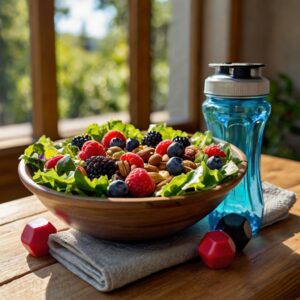 As your athletic performance reaches its peak, it’s easy to focus on pushing harder, training longer. But there’s a sneaky opponent working against your inflammation. It’s often a silent saboteur that can significantly impact recovery and ultimately, your results.
As your athletic performance reaches its peak, it’s easy to focus on pushing harder, training longer. But there’s a sneaky opponent working against your inflammation. It’s often a silent saboteur that can significantly impact recovery and ultimately, your results.
Inflammation is a natural response to injury or stress; however, chronic, low-grade inflammation caused by diet can hinder the body’s ability to repair itself effectively after intense training.
Think of it like this: when you push your muscles to their limits, they naturally become inflamed. A healthy inflammatory response helps initiate the healing process. But a constant influx of processed foods, sugary drinks and unhealthy fats can keep that inflammation constantly elevated, delaying muscle repair and increasing soreness. This means you’re not bouncing back as quickly as you could be.
Certain dietary choices fuel this chronic inflammation. High intakes of refined carbohydrates and saturated fats contribute to increased levels of inflammatory markers in the body.
Foods like pastries, fried foods and excessive amounts of red meat can exacerbate this issue. Conversely, a diet rich in anti-inflammatory foods think colourful fruits and vegetables, fatty fish, nuts and seeds helps manage inflammation and supports optimal recovery.
The Body’s Reactive Response
People experience a reactive response when they engage in intense physical activity. This is a natural process that your body uses to repair itself after exertion.
This reaction creates inflammation, a key component of this response. It’s not necessarily bad; it’s how your body signals the need for healing and rebuilding.
During intense training, muscles experience microscopic damage. This triggers a cascade of events swelling, redness, heat all hallmarks of inflammation. These are signs that your body is working to repair those damaged tissues.
However, excessive or prolonged inflammation can actually hinder recovery. It’s like adding fuel to the fire, delaying the healing process and potentially contributing to soreness and fatigue.
Understanding this reactive response to how your body responds to physical stress is a crucial step in optimizing athletic performance and ensuring proper recovery.
Identifying Key Inflammatory Triggers
The body can respond differently to exertion, and that’s where inflammation comes into play. You might not always realize it, but certain foods are major triggers for this response.
Processed Foods Are a Big Culprit. Many packaged snacks and meals contain high levels of refined sugars, unhealthy fats, and artificial additives. These ingredients can significantly increase inflammatory markers within the body after intense physical activity.
Think about sugary cereals or heavily processed meats; they are often loaded with compounds that promote inflammation. Your body reacts to these foods as if it’s under attack, triggering a cascade of immune responses and contributing to muscle soreness and fatigue.
Certain Additives Can Amplify the Problem. High-fructose corn syrup, artificial sweeteners, and nitrates commonly found in many processed foods have been linked to increased inflammation.
These additives can disrupt gut health, which is increasingly recognized as a key factor in overall inflammation levels. A compromised gut microbiome can exacerbate the body’s inflammatory response after exercise.
Gut Health’s Role in Recovery
After your body pushes itself during a workout, it needs time to repair and rebuild. You might think protein shakes and fancy supplements are the key, but there’s another crucial factor: your gut health.
A healthy gut is absolutely vital for efficient recovery. It’s where a huge amount of your body’s repair work happens rebuilding muscle tissue, reducing inflammation, and replenishing energy stores.
Think about it this way: when your gut isn’t functioning optimally, it can lead to increased inflammation throughout the body. This chronic inflammation slows down recovery, making you feel sore for longer and hindering your progress. A balanced microbiome that’s the community of good bacteria living in your gut plays a key role in reducing this inflammation.
The type of food you consume directly impacts this microbiome. Consuming plenty of fruits, vegetables, and fermented foods like yogurt or kefir can promote a thriving population of beneficial bacteria. These bacteria produce short-chain fatty acids which have powerful anti-inflammatory effects.
Anti-Inflammatory Foods: The Arsenal
Anti-inflammatory foods form an arsenal that can boost athletic recovery. These foods are rich in compounds that fight inflammation, a natural response to injury or intense exercise but when left unchecked, it can hinder healing and prolong discomfort.
You’ll find key components within these foods which help reduce swelling, accelerate tissue repair, and minimize muscle soreness after strenuous activity.
Think of things like fatty fish rich in omega-3s salmon, tuna, mackerel; they are a powerhouse for reducing inflammation. Berries, particularly blueberries and strawberries, are packed with antioxidants that neutralize harmful free radicals created during exercise. Foods like turmeric and ginger also contain compounds known to have anti-inflammatory properties, while leafy greens provide vitamins and minerals essential for tissue repair.
Omega-3s and the Muscle Repair
Imagine you’ve just finished an intense training session pushing your body to its absolute limit. You feel amazing¦ until the soreness starts to creep in. That delayed onset muscle soreness (DOMS) can really sideline your progress, making it tough to train effectively and potentially increasing the risk of injury. But what if there was a way to accelerate recovery and minimize that pain?
Omega-3 fatty acids, particularly EPA and DHA found abundantly in fish oil, play a crucial role in this process. They’re not just about heart health; they’re powerful allies for muscle repair.
Research suggests these fats help reduce inflammation, a key culprit behind DOMS. When you exercise, your muscles experience micro-tears. This triggers an inflammatory response as your body begins the repair process. However, excessive inflammation can actually hinder this repair and prolong the soreness. Omega-3s work to dampen down that overreaction, creating a more favorable environment for tissue regeneration.
Specifically, EPA has been shown to support muscle protein synthesis essentially, it helps your body build new muscle fibers faster.
Think of it like this: Omega-3s are magically erasing the soreness, but they are optimizing the conditions for your muscles to rebuild stronger and more efficiently, leading to quicker recovery times and ultimately, better performance when you return to training.]
Curcumins Potent Anti-Inflammatory Effects
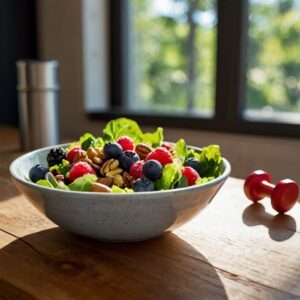 Just curcumins potent anti-inflammatory effects are what make it a game changer for athletic recovery. You see, intense training causes microscopic damage to muscles and tissues; this is where inflammation kicks in. It’s a natural response, but excessive inflammation can slow down healing and increase the risk of injury.
Just curcumins potent anti-inflammatory effects are what make it a game changer for athletic recovery. You see, intense training causes microscopic damage to muscles and tissues; this is where inflammation kicks in. It’s a natural response, but excessive inflammation can slow down healing and increase the risk of injury.
Curcumin, a key component of turmeric, has been shown to powerfully combat this inflammation at the cellular level. Think of it like a targeted repair crew for your muscles!
Studies have demonstrated curcumin can reduce markers of inflammation things like C-reactive protein which are indicators that the body is actively fighting damage. This means faster healing and reduced soreness after workouts.
The beauty of this is that you don’t need a huge dose to see an effect. Curcumin works synergistically with your own body’s natural defenses, amplifying its ability to repair itself.
It’s not just about masking the pain; curcumin actively addresses the root cause inflammation allowing you to get back in the game sooner and stronger.
Optimizing Nutrient Timing for Recovery
You’ll notice that athletes often talk about recovery. But it’s more than just rest. It’s about fueling your body properly to rebuild and repair after intense training or competition.
Optimizing nutrient timing means focusing on what you consume *around* those key moments immediately after activity, and during the subsequent recovery period.
Think of it like this: within 30-60 minutes post-workout, consuming a combination of protein and carbohydrates helps repair muscle tissue and replenish energy stores. A quick shake with fruit or a small meal can do the trick.
During recovery which can last for hours or even days you need to continue providing your body with the building blocks it needs.
This means prioritizing foods rich in antioxidants and anti-inflammatory compounds, like berries, leafy greens, and fatty fish. These help combat oxidative stress caused by intense exercise.
So, strategically timing your meals and snacks around training sessions focusing on protein, carbs, and those key nutrients is a powerful way to maximize recovery and performance.
Beyond Diet: Hydrations Crucial Impact
While a fantastic anti-inflammatory diet can certainly help boost athletic recovery, you need to recognize that hydration plays an absolutely critical role. It’s so much more than just drinking water, it’s about optimizing your body’s ability to repair and rebuild after intense activity.
Think about what happens during a tough workout. You lose fluids through sweat, obviously, but also through respiration the very act of breathing expels moisture. This depletion can significantly impact muscle function and recovery if it isn’t replenished effectively.
Muscle tissue is largely composed of water, so dehydration directly affects its ability to repair itself. Without adequate hydration, protein synthesis the process where your body builds new muscle slows dramatically. Furthermore, reduced fluid volume can hinder nutrient delivery to damaged tissues, prolonging the recovery timeline.
Beyond just replenishing lost fluids, proper hydration influences electrolyte balance. Electrolytes like sodium and potassium are vital for nerve function and muscle contractions. Imbalances due to dehydration can lead to cramping and further impede your body’s natural repair mechanisms.
Maintaining the right fluid volume is key to supporting efficient nutrient transport and waste removal, both essential components of a speedy recovery. It’s about fueling that process from the inside out!
The Mind-Body Connection to Healing
Often, athletes push their bodies to the absolute limit. You’re training hard, competing fiercely, and demanding peak performance. But what you might not realize is that fueling your body with the wrong foods can actually sabotage all of that effort.
The mind-body connection to healing means that how you nourish yourself directly impacts your ability to recover both physically and mentally. It’s about recognizing that a stressed, inflamed body struggles to rebuild and repair itself efficiently.
Think of it like this: if you’re constantly feeding your system with processed foods, sugar, and unhealthy fats, you’re essentially creating an environment ripe for inflammation. This inflammation slows down muscle recovery, increases soreness, and can even impact mental clarity making it harder to focus during training or competition.
When you prioritize an anti-inflammatory diet, you’re sending a powerful message to your body: œTime to heal and rebuild. You’ll be providing the building blocks for optimal repair, reducing swelling, and supporting overall wellness.
Essentially, by choosing foods that actively combat inflammation like plenty of fruits, vegetables, lean protein, and healthy fats you’re not just fueling your performance; you’re optimizing your recovery process from the inside out.
Personalized Anti-Inflammatory Strategies
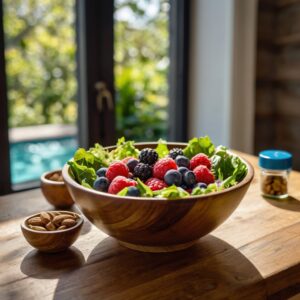 Now, understanding that everybody is different, personalized anti-inflammatory strategies are key for boosting athletic recovery.
Now, understanding that everybody is different, personalized anti-inflammatory strategies are key for boosting athletic recovery.
It starts with recognizing what triggers inflammation in your system things like intense workouts, poor sleep, and certain foods can all play a role.
Consider tracking how you feel after specific training sessions or meals to identify potential culprits. Are there certain foods that consistently lead to soreness or fatigue?
You can then tailor your diet accordingly focusing on nutrient-dense, anti-inflammatory foods like fatty fish rich in omega-3s, leafy greens packed with antioxidants, and colorful fruits and vegetables.
Experimenting with different foods is a great way to see what works best for you. Some people find that incorporating turmeric or ginger into their meals can help reduce inflammation.
Essentially, this approach means listening to your body and adjusting your diet based on its unique needs maximizing recovery and performance through targeted anti-inflammatory strategies.
Sustaining Peak Performance Long-Term
True, sustaining peak performance really comes down to how your body recovers after intense training. You see, a lot of athletes push themselves incredibly hard, and that naturally creates inflammation; it’s a normal part of the process. But chronic, prolonged inflammation can actually hinder recovery and sabotage those gains.
Think about what you’re fueling your body with. A diet rich in processed foods, sugary drinks, and excessive amounts of unhealthy fats can significantly contribute to this ongoing inflammatory response. These things create a constant state of irritation within the system.
This isn’t just about feeling sluggish; it impacts muscle repair, reduces energy levels, and even increases the risk of injury. A diet packed with refined carbohydrates and saturated fats can essentially be feeding the inflammation rather than supporting the body’s natural healing processes.
Conversely, an anti-inflammatory diet focused on whole foods provides your body with the tools it needs to combat this damage effectively. You’re providing nutrients that actively reduce swelling and promote tissue regeneration.
Foods like fatty fish rich in omega-3s, plenty of colorful fruits and vegetables brimming with antioxidants, and incorporating healthy fats from sources like avocados and olive oil can make a huge difference. It’s about proactively managing inflammation to ensure you’re consistently performing at your best.
Unlock Your Peak Potential: It’s More Than Just Sweat!
Serious athletes understand that true performance isn’t just about pushing harder; it’s about fueling their bodies for optimal recovery.
The science is increasingly clear chronic inflammation can significantly hinder athletic recovery, leading to prolonged soreness, reduced strength gains, and a higher risk of injury. An anti-inflammatory diet, rich in nutrient-dense foods like colorful fruits and vegetables, healthy fats from sources such as salmon and avocados, and spices like turmeric and ginger, actively combats this internal battle. Focusing on whole, unprocessed foods directly addresses the root cause of delayed recovery, providing the body with the tools it needs to rebuild and repair itself efficiently.
By prioritizing an anti-inflammatory approach to nutrition, athletes can dramatically reduce muscle soreness, accelerate healing times, improve energy levels during training, and ultimately enhance overall performance capabilities. It’s a strategic investment in sustained athletic success.
Start nourishing your body from the inside out. Today, experiment with incorporating these powerful foods into your diet and witness the transformative impact on your athletic journey. Embrace this proactive approach, and watch as your potential truly unfolds!

